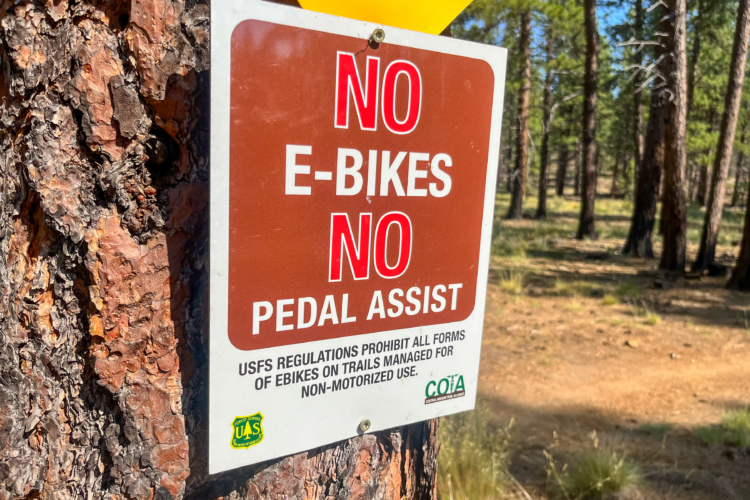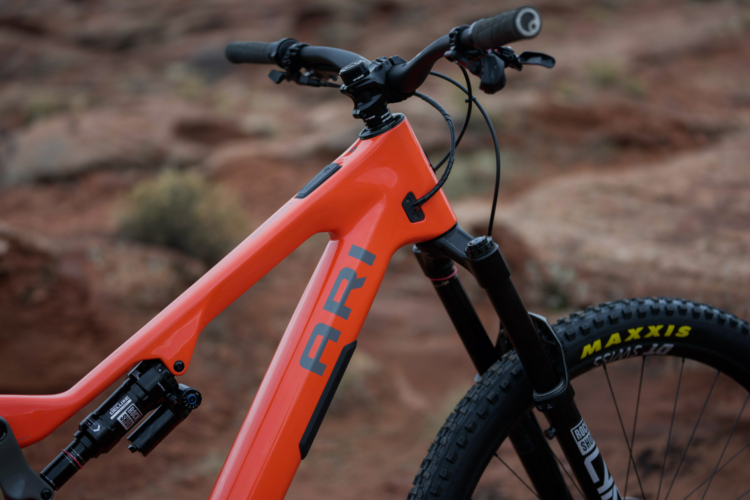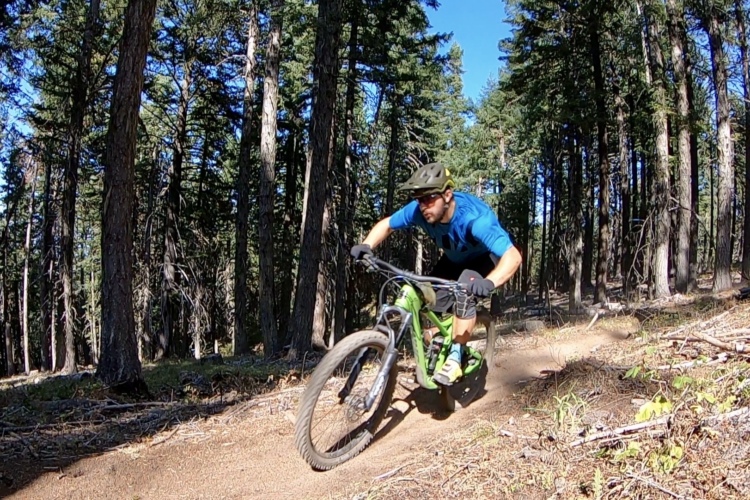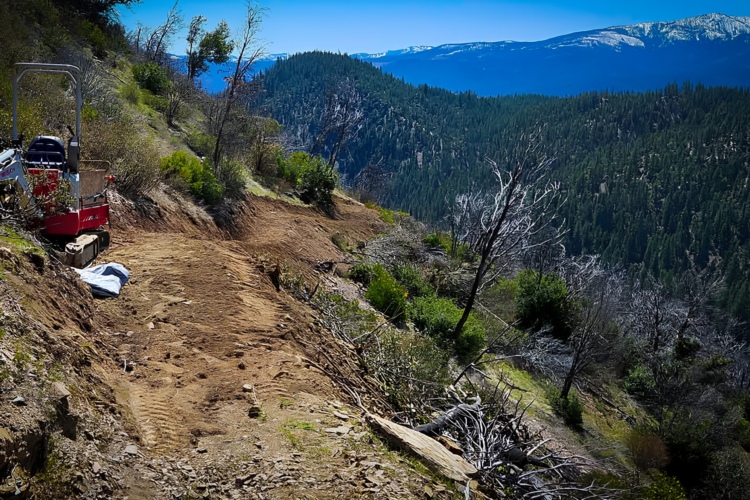
As e-bike popularity has continued to grow over the past several years, we have seen the United States try to play catchup with areas with more permissive e-bike access laws. From Europe to Australia, to our neighbors just north of the border, e-bikes encounter very few restrictions in most other countries.
This is also true in Norway, where e-bikes have been allowed full trail access since 2017.
However, the e-bike freedom that has been the standard for so many years is now under threat in Norway. The country’s Motor Traffic Act (MTA), initially established in 1977, currently has a proposed revision that would remove class-1 pedal-assist e-bikes from trails.
If e-bike access to singletrack is banned in Norway, could more European countries follow? While mountain bike advocacy groups in Norway look to battle this new legislation, others are concerned that Norway may be the first domino.


The Norwegian Motor Traffic Act
The MTA was established to regulate motor traffic outside Norway’s road system. It covers off-road driving on what is deemed “uncultivated land,” including trail systems. The Act also includes driving on lakes and wetlands and encompasses public and private land.
Singletracks was sent the several-hundred-page Norwegian law document outlining everything concerning the MTA and why the Norwegian government is looking to update the legislation. Unfortunately, the vast majority of the document is in Norwegian. Fortunately, roughly four pages summarize the proposal in English.
However, the English summary doesn’t focus much on the e-bike aspect that groups like the Norwegian Organisation for Mountain Biking (NOTS) feel is being threatened. However, we were told that the Norwegian language discusses eMTBs in more detail.
“The background material for the new proposal for the MTA discusses eMTBs in detail over five separate pages,” Simen Filseth of NOTS told us.
Filseth was kind enough to share a NOTS document summarizing what exactly will be changing, why, and how it will affect e-bikes on Norwegian trails. First, it is important to recognize that class-1 e-bikes are classified as “bicycles” under European road code (NS-EN 15194). They are currently allowed on all trails in Norway; however, local municipalities have the right to ban them—which Filseth told us none have.
The NOTS document and the English summary of the Norwegian proposal both point out that despite some updates since 1977, the current MTA is outdated. Technology and use have both grown tremendously, prompting a need for the act to be reassessed as well.
The new MTA proposes the opposite, essentially banning e-bikes everywhere except roads and designated paths while allowing local municipalities to let them back on trails if they choose. The NOTS document gives three reasons as to why Norway is considering banning e-bikes:
- “The precautionary principle” — to limit potential damage to nature due to activities with undocumented effects or great/devastating damage potential.
- Future e-bike technology may introduce bikes with larger batteries and longer ranges, enabling access to more remote locations.
- Potential future user conflicts and wear on trails.
While e-bikes are certainly part of what some Norwegian lawmakers say harms the trails, Filseth told us the emphasis isn’t on them. This reality rings true in the English summary of the Norwegian proposal, where the focus tends to be on snowmobiles and ATVs. Filseth also told us that the MTA recognizes no known issues regarding e-bikes and no current bans.
But it seems that Norway — or at least one lawmaker — is looking to protect the future. “Based on one single input from a county governor about the future damage potential of e-bikes, a general ban on e-bikes on all trails is proposed as a ‘preventative measure,’” Filseth explained.
According to NOTS and Filseth, this “preventative measure” is unnecessary and already happening. “Specifically, it is meant to prevent possible access to vulnerable areas,” Filseth said. “NOTS is completely opposed to this argument. Vulnerable areas, such as nature reserves, all have local regulations that regulate the use of bikes and e-bikes, and this works fine today.”
Perhaps NOTS’ largest frustration was not being consulted on this current MTA proposal, despite past partnerships with the government on similar issues. Filseth told us that NOTS is a well-known mountain bike advocacy group in Norway, and the proposal strongly affects its members. NOTS first heard about the proposal in June.

Will a precedent be set?
A press release from the European arm of the International Mountain Bicycling Association (IMBA), dated July 12, 2024, briefly outlines the MTA proposal and goes on to state:
“[W]e at IMBA Europe worry that passage of such a poorly-motivated and uninformed law as that proposed in Norway may inspire a trend of similar restrictions affecting more of our member organisations and mountain bikers across the continent.”
Mark Torsius, General Manager of IMBA Europe, reiterated their concern about other countries following Norway’s lead. “If the proposal passes, it creates a kind of case law we’d rather not see,” Torsius told us. “Countries like Sweden will follow this process with more than average interest since Sweden is struggling with the official status of eMTBs as well.”
Torsius and IMBA Europe agree with NOTS that Norway’s e-bike allowance is already working well, with no need for drastic changes. Currently, e-bikes are allowed on trails, and if there is an issue, local governments have the authority to ban them.
A “measured hierarchy” is how Torsius felt any issues with e-bikes should be addressed. If there is an issue, start with the lightest management measure and scale up from there, but don’t institute the heaviest, overarching legislation. “That’s a better option than the blanketed ban that is now proposed,” Torsius said.
Filseth agrees. “The current possibilities for local municipalities to ban e-bikes is sufficient,” he told us. “The fact that there is not a single ban in effect shows that e-bikes are not seen as a problem today.”
In NOTS’ English summary on the MAT proposal, they mention that they are undecided about what course, or courses, of action to take but will decide in August. They will also be working on a “hearing note” that will be submitted before the proposal’s September 15th deadline.
NOTS also acknowledges that roughly one-third of its members do not support equal access to e-bikes.





















2 Comments
Aug 11, 2024
Aug 11, 2024